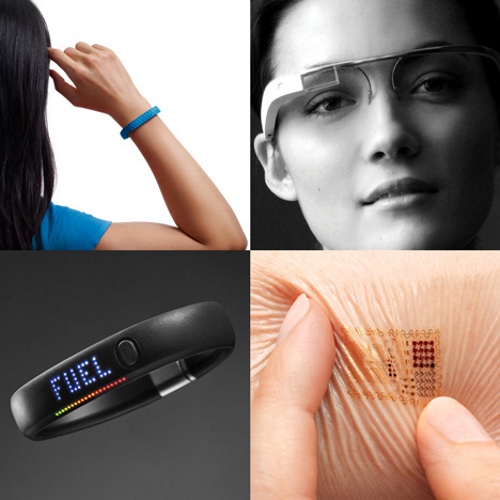It goes without saying that wearable gadgets represent the most popular consumer electronics sector on the market nowadays.

In fact, recent studies into just how popular this niche technology will become project revenue to be somewhere in the neighborhood of $20 billion by 2020.
What most people do not consider are the interior components that support today’s smart glasses, watches, shoes, etc. These are the technologies built into the wearable electronics to ensure they perform safely, reliably, and better than the previous model.
There are a bevy of challenges the circuit designer must consider when working these components into the gadget itself; chief among them is protecting the gadget’s internal components, including sensor circuits, data I/Os, buttons, etc., from things like user-generated electrostatic discharge, or ESD for short.

ESD can be generated by the user simply touching the device with his or her finger, and without proper protection in place, a small amount of ESD can cause irreparable damage to the device.
This is where circuit protection specialists like Littelfuse come in. The Chicago-based company is constantly developing new processes that enhance its semiconductor-based ESD protection components so as to allow circuit designers to confidently design products that are smaller, safer and more reliable than their previous versions.
The following are three of the more recent examples of circuit protection technologies that Littelfuse has released:
The SP3014 Series TVS diode array has a super-low clamping voltage to ensure circuit safety in the event of ESD: If and when an ESD should occur, the most important thing for the protector to do is to divert and dissipate as much of the discharge as possible. This can be improved by reducing the on-state resistance, as it will allow the component to carry more of the surge than the circuit being protected; this, in turn, reduces the electrical stress on the IC and ensures its survival. To this regard, the SP3014 Series TVS diode array from Littelfuse has a dynamic resistance value of less than 0.1 Ω, which, statistically speaking, is among the best in the industry.

Littelfuse SP3014Series TVS diode array
The SP3022 Series TVS diode features a capacitance value so low, it’s practically ”invisible” to high-speed signals, thereby limiting interference: While an ESD protector is tasked with protecting the IC from random surges, its other job is to not get in the way of the circuit itself. To ensure the device’s signal integrity remains top-notch, the capacitance of the ESD protector must be minimal (while not compromising its protection levels). A good benchmark is the SP3022 Series TVS diode from Littelfuse, which features a capacitance value of 0.35 pF, a number so low it’s seen as invisible to high-speed signals.
The SP1020 is purposely small enough so as to not take up a lot of board space: One of the things that’s great about wearable technologies is just how small these gadgets actually are; they’re purposely this tiny so users can go about their day without a second’s thought spent realizing they’re wearing some form of measuring gadgetry. That’s why it is important that ESD protector technology be small enough that it does not impact the overall size of the device. And as wearable technologies continue to get thinner and smaller, the circuit protection technologies associated with them need to be reduced in size as well. Fortunately, Littelfuse has a full line of diodes to match the circuit designer’s plans, including the SP1020 (30 pF) and SP1021 (6 pF) Series diodes that are contained within the 01005 package outline to minimize the amount of space they occupy. There’s also the SP1012 Series, which includes a pack of five bidirectional channels of protection in a super-small 0.94 x 0.61-mm package.
Even as this article is being written, designers are coming up with new technologies that will require updates to ancillary components like ESD protection. Fortunately companies like Littelfuse constantly update their circuit protection technologies to meet the needs of tomorrow’s gadgets.
To learn more about the latest in circuit protection technology and how to accelerate your design from concept to completion, visit Littelfuse.com and Speed2Design.com
Advertisement
Learn more about Littelfuse





